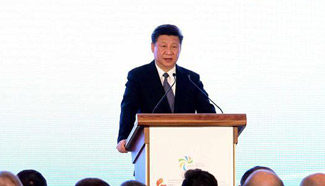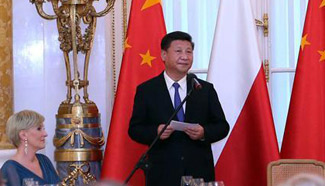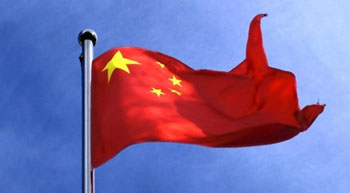BEIJING, June 21 (Xinhua) -- Chinese President Xi Jinping on Tuesday concluded state visits to Serbia and Poland, two of China's old friends in Central and Eastern Europe (CEE) and important links in China's Belt and Road Initiative.
The CEE trip yielded positive outcomes, including the upgrading of China-Serbia and China-Poland relations to comprehensive strategic partnerships, and commitments to advancing cooperation in Belt and Road projects.
Xi's visits to the two countries, both of which are strategically located, are aimed at further cementing ties with the two countries, and improving the alignment of the two's respective development strategies with those of China.
Growth in bilateral cooperation will result in enhanced connectivity, greater investment and other practical benefits for CEE and Europe as a whole, experts observed.
China-CEE cooperation, also known as the 16+1 mechanism, and China-Europe cooperation, "could serve as a driving force and a model for the implementation of the Belt and Road Initiative," said Cui Hongjian, a China-Europe relations specialist with the China Institute of International Studies.
BOOMING 16+1 COOPERATION
Over the past four years, guided by the spirit of mutual respect, mutual benefit, openness and inclusiveness, the 16+1 cooperation has maintained strong momentum, expanded and deepened, and has become more mature and ready for harvest, the Chinese president said in a signed article published on a leading Polish newspaper last Friday.
CEE, home to many emerging economies, makes up nearly one fourth of all countries along the Belt and Road. These countries' cooperation with China, the world's largest developing country, has been burgeoning, covering a wide range of fields such as trade, investment, infrastructure, finance, tourism and education.
Trade volume between China and CEE countries reached 56.2 billion U.S. dollars in 2015, a 28-percent increase from 2010. Chinese investment in the 16 CEE countries exceeded 5 billion dollars, while CEE has invested more than 1.2 billion dollars in China.
Connectivity has also improved. Recent years have seen a number of Chinese cities launch freight train services to Europe, including two lines linking China's Chengdu and Suzhou with Poland's Lodz and Warsaw.
The trains, which transport goods faster than by sea and more cheaply than by air, could help build destination cities into regional logistics hubs and propel their economic growth.
"China-Europe freight trains have played a significant role in boosting infrastructure connectivity among the Belt and Road countries, and meeting transportation needs in international trade," said Zhu Shuai, researcher with the China Center for Information Industry Development under the Ministry of Industry and Information Technology.
At the bilateral level, China has signed cooperation documents with seven CEE countries, including Serbia and Poland, to promote the Belt and Road Initiative.
Transport and energy infrastructure cooperation serve as a highlight of China's relations with CEE countries.
Serbia, for example, has cooperated with China on a number of infrastructure projects, including the Mihajlo Pupin Bridge, the expansion and upgrading of Kostolac Power Plant, and the Belgrade-Budapest railway.
Cooperation projects carried out under the 16+1 mechanism will "not only help accelerate CEE growth, but also balance development in different European regions and greatly promote Europe's integration process," Zhu commented.
STRENGTHENED CHINA-EUROPE TIES
With CEE serving as an important gateway to Europe, the 16+1 mechanism is important to China-Europe cooperation. Headway made in China-CEE cooperation supplements and promotes China-Europe ties.
Leaders of European countries and China have on various occasions vowed to push for the integration of their development strategies, which place special emphasis on infrastructure development and industrial capacity cooperation.
During German Chancellor Angela Merkel's visit to China earlier this month, the two sides agreed to boost cooperation on conjoining China's "Made in China 2025" blueprint and Germany's "Industrial 4.0" strategy.
China and Europe are also seeking cooperation in projects like the Trans-European Transport Networks, China-Europe Land-Sea Express Line and New Eurasian Continental Bridge.
High-level visits have helped bolster the cooperation.
In recent years, President Xi has made several visits to European countries, including the Netherlands, France, Germany and Belgium in 2014; Britain in 2015; and the Czech Republic in March this year.
Such visits could lead to better understanding and alignment of each other's strategies, new cooperation projects and more effective implementation of existing ones, Cui Hongjian with the China Institute of International Studies said.
"After all, it is bilateral cooperation in concrete projects that shores up 16+1 cooperation, and the integration of China's and Europe's development strategies," Cui said.











